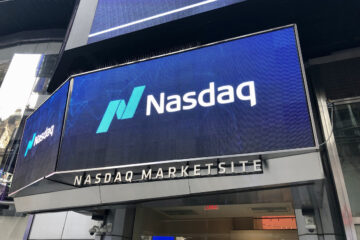Twitter’s corporate debt ratings withdrawn by S&P and Moody’s.
Twitter faces significant challenges as advertisers have balked at promoting their products and services since its acquisition by billionaire Elon Musk, pushing credit ratings agencies to pull their ratings.
The $44 billion takeover by Musk, who also serves as CEO of Tesla, has been met with a flurry of rash decisions such as the immediate layoffs of 50% of its workforce, attempts to generate revenue by allowing anyone to pay for its infamous blue checkmark that was later rescinded and allowing racist, discriminatory accounts to post tweets again.
S&P Global Ratings withdrew its ‘B-‘ long-term issuer credit rating of the social media company on Dec. 2 due to a “lack of sufficient information to maintain the rating,” the company said.
The ratings agency also withdrew its ‘B-‘ issue-level rating on the company’s senior unsecured debt.
“The ratings were on CreditWatch with developing implications at the time of the withdrawal,” said S&P.
Moody’s acted faster and on Nov. 18 withdrew Twitter’s B1 corporate family rating (CFR), B1-PD Probability of Default Rating (PDR) and B1 senior unsecured notes ratings that were previously under review for downgrade.
The ratings agency said it “believes it has insufficient or otherwise inadequate information to support the maintenance of the rating.”
Shutterstock
Twitter’s Revenue Problem
Since 2019, Twitter has not reported an annual profit and during the last decade, it reported a loss in eight of those years.
Monetizing the social media network’s reach has been challenging – in 2021, the company’s net loss shrunk to $221.4 million from $1.14 billion in 2020.
Twitter has stumbled in its attempts to gain new users and also its revenue which was reported at $5.1 billion in 2021.
For the quarterly period that ended June 30, which was its last quarter reporting as a public company, Twitter generated $1.18 billion in revenue, down slightly year-over-year.
Twitter has relied heavily on its advertisers to produce revenue and about 90% came from advertisers who paid $4.51 billion in 2021 while another $572 million was generated from licensing data and other services.
The changes Musk has made have not been popular and some public companies have chosen to wait and see what plans he has in store to bulk up revenue for Twitter.
Many advertisers, starting with General Motors (GM) – Get Free Report, Audi, Pfizer (PFE) – Get Free Report and General Mills (GIS) – Get Free Report, suspended their commercials.
Some advertisers said they feared that the platform will once again turn into a free-for-all “hellscape” and want to see what direction Musk plans to take in terms of content management policy.
These companies want to know which tweets Musk will allow and block on the platform.
Companies are worried about the position of Musk who defines himself as a “free speech absolutist” because he believes that anything can be said.
Twitter reported over $2 billion in cash and less than $600 million in net debt before the acquisition discussions, which is a low amount for a company that is part of the S&P 500 index.
The cash level has fallen by 35% from a year earlier as of June 30, according to a regulatory filing.
Twitter was paid for by Musk accruing $13 billion in debt. The remainder of the $44 billion deal was paid for in equity while the rest came from several investors.
In November, Musk said that Twitter had suffered “a massive drop in revenue” and lost $4 million a day, but he did not give a reason if the drop in revenue was from advertisers halting their spending or if the cause came from the online ad market’s recent downturn due to fears of a recession.
Employee Layoffs
Not only did Musk immediately fire Twitter’s CEO and CFO and other key executives, the social network lost almost 67% of its 7,500 employees since the takeover on Oct. 27.
This hemorrhage is due to the decisions of Musk who slashed half of Twitter’s employees in one day in an attempt to lower costs for the company.
But Musk quickly reversed course and a few days later said the social network company was recruiting. The announcement was made in company slides shared on Nov. 26 on the platform by Musk himself.
On one of the slides it is written: “We’re recruiting.” It is not specified how many positions are to be filled or the nature of the jobs — engineers, sales etc.


